Key Findings from the KPMG Banking Survey
- Nearly half of bank executives expect generative AI to handle 21-40% of their teams’ daily tasks by the end of 2025
- 60% of bank executives consider generative AI a top investment priority despite economic uncertainty
- 57% view generative AI as integral to their long-term innovation strategy
Current and Planned Applications
- Active Piloting: Approximately 50% of banks are piloting generative AI for:
- Fraud detection
- Financial forecasting
- Cybersecurity (34%)
- Current Usage:
- 78% are using or piloting generative AI for security/fraud prevention
- 85% are using it for data-driven insights and personalization
Business Impact and Challenges
- Banks are implementing generative AI to:
- Inform sales teams
- Enhance analytics
- Improve product development
- Personalise customer experiences
- Optimise due diligence processes
- Aid in identifying high-potential business opportunities
- Industry experts note that AI development is moving at a “breathtaking” pace, with banks sometimes turning to third-party vendors for implementation.
- Banks must balance rapid adoption with proper controls around compliance, legal, and risk management.
Impact of Generative AI on Banking Labour Force
Current Workforce Transformation
Based on the KPMG survey mentioned in the article, banking executives anticipate significant labour impacts from generative AI:
- Nearly half expect generative AI to handle 21-40% of their teams’ daily tasks by the end of 2025
- About three-quarters expect it to handle between 6% and 40% of daily tasks
- Banks are actively redefining work allocation between human employees and AI systems
Task Displacement Analysis
Generative AI’s impact varies significantly across different banking roles and functions:
High Displacement Potential
- Document Processing Roles
- Loan documentation processing
- KYC verification
- Account opening paperwork
- Trade finance documentation
- Basic Customer Service
- Routine inquiries handling
- Account information requests
- Transaction explanation
- Password resets and basic troubleshooting
- Data Analysis and Reporting
- Financial report generation
- Regulatory reporting
- Performance analytics
- Market analysis summaries
Moderate Displacement Potential
- Middle-Office Functions
- Risk assessment for standard cases
- Compliance monitoring
- Credit evaluation for straightforward applications
- Transaction reconciliation
- Financial Advisory
- Basic financial planning assistance
- Product recommendations
- Investment portfolio analysis
- Market trend interpretations
- Internal Communications
- Meeting summaries
- Policy documentation
- Training material development
- Internal knowledge management
Low Displacement Potential
- Relationship Management
- High-net-worth client relationships
- Complex business banking relationships
- Strategic partnership management
- Trust-based advisory services
- Complex Decision Making
- Unusual credit decisions
- Strategic investment choices
- New market entry planning
- Crisis management
- Innovation and Strategy
- New product development
- Business model innovation
- Competitive strategy formulation
- Organizational transformation
Workforce Implications
Short-Term Effects (1-2 Years)
- Productivity Enhancement
- As noted in the article, banks are using AI to help junior bankers produce “higher-quality output but more efficiently”
- Immediate focus on augmentation rather than replacement
- Reduction in overtime and burnout among existing staff
- Elimination of most tedious, repetitive tasks
- Skill Bifurcation
- Growing gap between technically skilled and unskilled banking employees
- Premium on AI literacy and the ability to work alongside AI systems
- Devaluation of routine process knowledge
- Increased importance of judgment and relationship skills
- Training Imperatives
- The article emphasizes that “training employees on using new tools or software is ‘a big element of all of this'”
- Significant investment in upskilling programs
- Cross-training for multi-capability roles
- Emergence of AI supervisory specialists
Medium-Term Effects (3-5 Years)
- Organizational Restructuring
- Flattening of organizational hierarchies
- Reduction in middle management positions
- Consolidation of operational teams
- Creation of AI oversight and governance roles
- Employment Patterns
- Net reduction in headcount for routine processing functions
- Growth in specialized technical and relationship roles
- Shift toward higher value-added activities
- Changing composition of banking workforce demographics
- New Role Emergence
- AI prompt engineers for banking applications
- AI output quality controllers
- AI-human collaboration specialists
- Banking AI ethics officers
Long-Term Effects (5+ Years)
- Fundamental Role Redefinition
- Complete transformation of certain banking functions
- Evolution from task execution to judgment and oversight
- Increased emphasis on uniquely human capabilities
- New paradigms for value creation in banking
- Compensation Structure Changes
- Revised valuation of different skill sets
- Performance metrics tied to AI collaboration effectiveness
- Premium for scarce relationship and judgment skills
- New incentive structures for innovation
- Industry-Wide Transformation
- Potential consolidation of banking operations
- Reshaping of the competitive landscape based on AI capabilities
- Evolution of banking as a career path
- Changed expectations for career progression
Worker Experience Transformation
Day-to-Day Work Changes
- Reduced time spent on routine documentation and analysis
- More time allocated to client interaction and complex problem-solving
- Constant collaboration with AI systems
- Higher cognitive load for judgment and evaluation activities
Skill Requirements Evolution
- Technical Skills
- AI literacy and prompt engineering
- Data interpretation and validation
- Systems thinking for human-AI workflows
- Digital collaboration capabilities
- Human Skills
- Enhanced emotional intelligence
- Ethical judgment and decision-making
- Creative problem-solving
- Client relationship management
- Complex communication
- Adaptive Skills
- Continuous learning orientation
- Comfort with ambiguity and change
- Critical evaluation of AI outputs
- Resilience and adaptability
Mitigating Negative Impacts
Organizational Strategies
- Responsible Transition Planning
- Phased implementation with clear communication
- Internal mobility programs for affected employees
- Early identification of at-risk roles
- Transparent career pathing in the AI era
- Learning and Development
- Comprehensive upskilling programs
- Learning sabbaticals for deep skill acquisition
- Partnerships with educational institutions
- Mentorship programs pairing technical and domain experts
- Work Redesign
- Collaborative human-AI workflow development
- Job crafting to maximize human strengths
- Creation of hybrid roles combining multiple skill sets
- Career pathways that evolve with technological change
Policy Considerations
- Social Safety Nets
- Support for displaced banking workers
- Mid-career transition assistance
- Financial support during reskilling periods
- Retirement options for late-career employees
- Educational System Alignment
- Banking-specific AI education programs
- Continuous education models for banking professionals
- Certification frameworks for AI-banking hybrid skills
- Industry-academia partnerships for workforce development
Conclusion
The integration of generative AI into banking represents one of the most significant labour transformations in the industry’s history. While the article notes that “many banks, particularly larger lenders, are already investing in training” as they deploy AI tools, the scale and pace of change will challenge traditional approaches to workforce management.
The banking sector faces a critical balancing act: capturing the efficiency and capability gains that generative AI offers while managing the profound workforce transitions that will result. Success will require thoughtful strategies that go beyond simple cost reduction to reimagine how human talent and artificial intelligence can create new forms of value in financial services.
Story of a displaced banker
The story follows Lin Wei Ting, a senior credit analyst at a fictional Global Asian Bank, as he navigates the implementation of an AI system that challenges his expertise and identity. Through his experience, the story examines several key themes:
- The initial resistance many experienced professionals feel toward AI technologies
- The psychological impact of seeing one’s specialized skills potentially devalued
- Singapore’s particular context as a financial hub embracing technological innovation
- The potential for meaningful human-AI collaboration rather than simple replacement
- The personal reinvention required to adapt to technological disruption
The Last Analyst: A Singapore Banker’s AI Transformation
Lin Wei Ting’s corner office on the 43rd floor of Singapore’s Marina Bay Financial Centre had been his reward after fifteen years of climbing the corporate ladder at Global Asian Bank. From his window, he could see the gleaming towers of the Central Business District, framed by the waters of Marina Bay. This panorama had once filled him with pride. Now, it only reminded him how quickly things could change.
“Another report flagged for review,” he muttered, scrolling through his notifications. The AI system had found a pattern he had missed in a client’s transaction history. It wasn’t the first time this week.
Wei Ting, at 42, was the bank’s Senior Credit Risk Analyst, responsible for assessing large corporate loan applications. He had built his reputation on an almost intuitive ability to spot risk factors that others missed. His recommendations carried weight with the bank’s lending committee.
That was before GAB-AI.
Eight months ago, Global Asian Bank rolled out its proprietary generative AI system, which the staff promptly nicknamed “Gabbf”. The bank’s leadership assured everyone that Gabby was merely a tool to enhance productivity, not replace human judgment. Wei Ting initially dismissed it as another tech fad that would ultimately prove inferior to human expertise.
“Credit analysis isn’t just about numbers,” he had told his team confidently. “It’s about understanding people, markets, relationships.”
But Gabby had learned quickly. Fed with decades of historical lending data, regulatory filings, news archives, and market intelligence, the AI system could process information at a scale no human could match. It identified subtle correlations and patterns that even the most experienced analysts missed.
Wei Ting picked up his coffee mug—a gift from his daughter with “World’s Best Dad” printed on it—and walked to the pantry for a refill. The floor was quieter these days. Where once thirty analysts had occupied this space, now just twelve remained, each overseeing the AI’s output rather than performing original analysis.
“Morning, Wei Ting,” called Sophia, a younger analyst who had adapted quickly to the new system. “Did you see Gabby’s analysis on the Meridian Shipping proposal? It flagged risks in their Southeast Asian operation that weren’t obvious from the financials.”
“I’m reviewing it now,” he replied with a tight smile. What he didn’t say was that he had spent three days working on that same proposal, and had missed the connection between Meridian’s Malaysian subsidiary and a struggling port operator in Johor.
Back at his desk, Wei Ting stared at his monitor. The AI had generated a beautiful visual representation of Meridian Shipping’s corporate structure, with colour-coded risk indicators throughout their global operations. In minutes, it had accomplished what would have taken his team days.
His phone buzzed with a message from his wife: “Don’t forget we’re viewing that cooking class tonight. 7 PM.”
Wei Ting sighed. Lin Mei had been suggesting various hobbies and classes for months now. She never said it directly, but he knew what she was thinking: he needed to prepare for a different future.
The quarterly leadership meeting was scheduled for 2 PM. As Wei Ting entered the conference room, he noticed the Chief Technology Officer, Sunil, deep in conversation with Sarah, the bank’s CEO. They both looked up and smiled as he approached.
“Wei Ting, just the man we wanted to see,” Sarah said. “We were discussing the AI transition in Credit Risk.”
His stomach tightened. “What about it?”
Sunil tapped on his tablet. “The numbers are compelling. Loan processing time down 62%. Risk assessment accuracy improved by 28%. Customer satisfaction is up across all metrics.”
“And the team reduction?” Wei Ting asked quietly.
Sarah’s expression softened. “We’ve reassigned most staff to customer-facing roles or specialised industry verticals. But yes, we’re operating with a leaner analytical team.”
“And what’s next?” Wei Ting asked. “Further ‘optimization’?”
“Actually,” Sarah replied, “that’s what we wanted to discuss with you. We’re creating a new role: Head of Human-AI Credit Strategy. We need someone who understands both the old and new approaches—someone who can help us navigate the transition while preserving the human insight that technology can’t replicate.”
Wei Ting blinked. “And you want me?”
“You’ve been resistant to the AI implementation,” Sunil said frankly. “But your expertise is invaluable. Instead of fighting the change, we want you to help shape it.”
The meeting continued, but Wei Ting’s mind was elsewhere. Was this a genuine opportunity or a graceful way to sideline him? Either way, it was clear his role as a traditional analyst was effectively over.
That evening, Wei Ting and Mei attended a cooking class in a renovated shophouse in Joo Chiat. As they chopped vegetables for laksa, the instructor former accountant who had reinvented herself after her firm automated most of her work, moved around the kitchen, offering advice.
“Cooking is something AI can’t do,” she chirped. “They can generate recipes, but they can’t taste, can’t feel, can’t adjust to the unexpected.”
Wei Ting thought about his day as he stirred the fragrant broth. Perhaps there was wisdom in her words. AI could process data, but it couldn’t understand the human elements that made banking more than just numbers.
After class, they walked along the colourful Peranakan houses, their facades a reminder of Singapore’s ability to preserve tradition amid constant change.
“I was offered a new position today,” Wei Ting finally said. “Working with the AI system, not against it.”
Mei squeezed his hand. “What will you do?”
“I’ve been thinking about what makes us human,” he replied. “Maybe the future isn’t about competing with AI but finding the spaces where we complement each other.”
“So you’ll take it?”
Wei Ting stopped and looked at the contrast between the heritage buildings and the modern skyline in the distance—Singapore’s perpetual balance between preserving the past and embracing the future.
“I think I will,” he said. “But on my terms. Because I’m starting to understand, the bank doesn’t just need the AI to learn from humans. They need humans who can learn from the AI, too.”
Six months later, Wei Ting stood before the bank’s executive committee, presenting the results of his human-AI integration Strategy. Behind him, a screen displayed metrics showing improvements in efficiency and accuracy.
“The key insight,” he explained, “wasn’t to let AI replace human judgment, but to redefine where human judgment adds the most value.”
His team had evolved. Some became AI supervisors, training the system and reviewing its output. Others specialized in client relationships, translating the AI’s findings into strategic advice. The most technically inclined became “banking prompt engineers,” experts in getting the AI to produce exactly what was needed.
Wei Ting himself had found a new passion: designing the human-AI interface. His years of experience had made him uniquely qualified to understand what information analysts needed and how it should be presented.
“We’re not the last analysts,” he concluded his presentation. “We’re the first of a new kind of banker. One that uses AI as an extension of human capability, not a replacement for it.”
As he walked back to his office—smaller now, but with the same view of the bay—Wei Ting reflected on his journey. The disruption had been painful, but necessary. Like Singapore itself, he had adapted, finding strength in transformation.
The AI system buzzed his phone with a message: “Anomaly detected in client portfolio. Human review recommended.”
Wei Ting smiled. There would always be work for people who could understand both the numbers and the human stories behind them. He had feared becoming obsolete, but instead, he had evolved.
The future would still need bankers, just not the kind he had once been.
Impact on Singapore’s Labour Market
While the article doesn’t specifically address Singapore, we cananalysee potential implications:
Singapore’s Context
- Tech-Forward Environment
- Singapore has embraced digital transformation in multiple sectors
- Government initiatives like Smart Nation promote technology adoption
- Sophisticated AI infrastructure already exists in many organisations
- Highly Competitive Job Market
- Limited labour pool withspecialisedd skills
- Strong presence of multinational corporations with standardised hiring practices
- An education system that emphasises measurable performance metrics
Specific Impacts
For Employers in Singapore
- Talent Identification Challenges: Similar to global trends, Singapore employers may struggle to identify genuinely skilled candidates amid AI-enhanced applications.
- Regulatory Considerations: Singapore’s Personal Data Protection Act (PDPA) and fair employment practices may require transparency about AI use in hiring
- SME Disadvantage: Smaller companies with fewer resources may be disadvantaged if unable to implement sophisticated screening systems
For Job Seekers in Singapore
- Skills Polarization: Those with access to advanced AI tools and the skills to use them effectively may gain advantages
- Impact on Foreign Talent: International applicants may face additional challenges navigating Singapore-specific hiring AI systems
- Cultural Factors: Singapore’s emphasis on educational credentials may interact with AI screening in ways that either reinforce or challenge traditional hiring preferences
For Policymakers
- Need to consider regulations around AI in hiring to ensure fairness
- Potential to establish national standards for ethical AI use in recruitment
- Opportunity to develop public resources, ensuring equitable access to AI tools
Long-term Considerations
The hiring AI arms race reflects broader questions about technology’s role in labour markets:
- Trust Erosion: The mutual escalation damages trust between employers and candidates
- Skill Validation: As AI can simulate specific skills, determining authentic capability becomes more complex
- Equity Concerns: The article highlights disparities in AI tool access that could exacerbate existing inequalities
- Balance of Power: The dynamic between job seekers and employers shifts as technology evolves
The article’s central lesson applies globally, including to Singapore: technological solutions to complex social processes like hiring often create new problems that require thoughtful, balanced approaches incorporating both human judgment and appropriate technology use.
Long-Term Labour Market Implications of the AI Hiring Arms Race
Structural Market Transformations
1. Credential Inflation and Skills Verification Crisis
The proliferation of AI tools that help candidates present themselves more effectively will likely trigger:
- CredentiScepticismism: Employers are becoming increasingly suspicious of traditional qualifications and resume claims
- Alternative Verification Systems: Rise of blockchain-verified credentials, continuous assessment portfolios, and work product demonstrations
- Skills-Based Hiring: Acceleration toward performance-based hiring rather than credential-based filtering
Over time, this may fundamentally restructure how skills are signalled in labour markets, potentially diminishing the value of traditional degrees while elevating demonstrable skills and authenticated work history.
2. Labour Market Segmentation
The uneven access to advanced AI tools noted in the article (31% of men vs. 18% of women using paid AI tools) indicates early signs of a broader segmentation:
- AI-Augmented Workers: Those with access to and proficiency with advanced AI tools form a privileged labour class
- Non-Augmented Workers: Workers without such access face systematic disadvantages in hiring processes
- Verification-Privileged Workers: Those who can easily verify their skills through networks or educational pedigree, maintaining advantages
This segmentation could harden existing socioeconomic divisions while creating new ones based on technological access and literacy.
Changes to Employment Relationships
1. Shifting Power Dynamics
The ongoing technological escalation will continually reshape power balances:
- Initial Employer Advantage: Early AI adoption gave employers significant screening power
- Current Rebalancing: Candidate AI use has partiallyneutralisedd this advantage
- Future Oscillations: Expect ongoing shifts as each side develops new technological countermeasures
These fluctuations may increase market uncertainty and friction costs for both employers and job seekers.
2. Trust Erosion and Relationship Models
Deepening scepticism about the authenticity of candidate representations could transform employment structures:
- Probationary Employment: Extended trial periods are becoming standard to verify candidate capabilities
- Project-Based Evaluation: Increase in gig-style trial projects before permanent hiring
- Reputation Systems: Development of trusted third-party reputation verification platforms
- Network-Based Hiring: Greater reliance on verified personal connections as AI makes stranger credentials less trustworthy
3. Hiring Timelines and Processes
The article mentions employers considering the reintroduction of in-person testing centres and earlier human interaction. These trends suggest:
- Longer Hiring Cycles: More complex, multi-stage verification processes extend time-to-hire
- Higher Hiring Costs: Additional verification steps increase the expense of recruitment
- Hybridised Approaches: AI used for initial sorting, with increased human oversight for final decisions
Labour Market Efficiency and Economic Impact
1. Matching Efficiency Paradox
The AI arms race creates a paradox for labour market efficiency:
- Theory: Better information should improve employer-employee matching
- Reality: When both sides use AI strategically, information quality may deteriorate
- Outcome: Potentially worse matching efficiency despite more sophisticated technology
This could lead to higher turnover rates, longer job vacancies, and increased friction ilabouror markets, potentially reducing economic productivity.
2. Skills Development Incentives
How workers invest in skills development may change dramatically:
- Verifiable Skills Premium: Skills that can be objectively demonstrated, gaining value
- Certification Evolution: Rise of micro-credentials and continuous assessment models
- “AI-Proof” Skills: Greater investment in capabilities that AI cannot easily simulate
- Meta-Skills Focus: Increased value for adaptability, learning capacity, and technological literacy
3. Labour Market Participation Effects
Different demographic groups may respond differently to these developments:
- Digital Natives: Younger workers are potentially adapting more readily to AI-mediated hiring
- Mid-Career Transitions: Workers changing fields face additional verification barriers
- Re-Entry Challenges: Those returning to the workforce after gaps are finding increased difficulty
Systemic and Policy Implications
1. Regulatory Responses
Expect increasing regulatory attention to AI in hiring:
- Transparency Requirements: Mandates for disclosing AI use in hiring processes
- Algorithmic Auditing: Requirements to test hiring systems for bias
- Data Rights: Expanded candidate rights regarding their application data
- AI Licensing: Potential certification requirements for hiring AI systems
2. Educational System Adaptation
Education providers will need to respond to changing verification needs:
- Continuous Assessment: Moving away from point-in-time examinations
- Authenticated Portfolios: Building verifiable work product collections throughout education
- Skills Demonstration: Greater emphasis on provable capabilities versus abstract knowledge
- AI Literacy: Including AI interaction as a core educational component
3. Labor Market Infrastructure
New institutions and platforms will likely emerge:
- Verification Platforms: Third-party services specializing in skills authentication
- AI-Resistant Assessment Centres: Specialised facilities for verified in-person testing
- Candidate Representation Services: Professional services helping navigate complex hiring processes
- Recruitment Process Redesign: Consulting specializing in balanced human-AI hiring systems
Conclusion: Toward a New Equilibrium
The AI arms race in hiring represents a classic technological disruption that initially creates inefficiency and uncertainty before potentially reaching a more productive equilibrium. The labour market is likely entering a multi-year adjustment period characterised by:
- Experimentation: Organisations testing various combinations of human and AI involvement
- Standardisation: Gradual emergence of new norms and best practices
- Infrastructure Development: Creation of supporting systems for the new hiring paradigm
The ultimate resolution will likely involve neither complete AI dominance nor rejection, but instead thoughtfully designed processes that leverage technology while preserving human judgment and dignity in employment relationships.
The most successful labour market participants—both individuals and organisations—will be those who approach these changes reflectively, adapting strategies while maintaining focus on authentic skill development and meaningful work relationships.
Several important insights:
Key Takeaways:

- Job Disruption at DBS Bank
- DBS plans to cut approximately 4,000 contract and temporary jobs over the next three years
- Permanent staff will not be affected
- AI is expected to take over many repetitive tasks

- Roles Most at Risk
- Customer service roles
- Compliance jobs
- Risk management positions
- Data entry clerks
- Some bank teller functions
- Marketing and sales roles involving fundamental data analysis

- Why Banking is Primed for AI Adoption
- Banks have massive amounts of data
- Financial institutions have the resources to invest in AI technologies
- Consumers are willing to share data for more efficient services
- Sophisticated risk modelling and regulatory requirements support AI integration
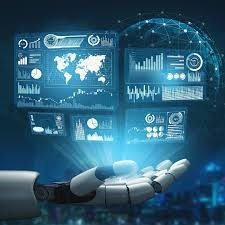
- Opportunities and Worker Adaptation
- 79% of financial sector employers struggle to find talent
- New roles emerging in AI system development and management
- Workers need to:
- Develop coding and software skills
- Enhance critical thinking and communication abilities
- Learn to work alongside and interpret AI systems

- Government and Industry Response
- Singapore is investing in upskilling initiatives
- Emphasis on preparing employees for an AI-driven future
The overall message is that while AI will significantly transform banking jobs, human professionals remain crucial, especially for complex decision-making and strategic roles.
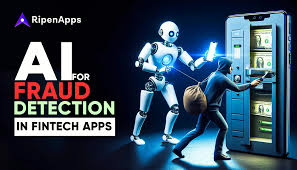
AI Disruption in Banking: A Comprehensive Analysis
Technological Foundations of Disruption
Data-Driven Transformation
The banking sector is uniquely positioned for AI integration due to:

- Massive volumes of transactional and historical data
- Sophisticated risk modeling capabilities
- Established digital infrastructure
- High computational resources
- Stringent regulatory frameworks that require precise data management
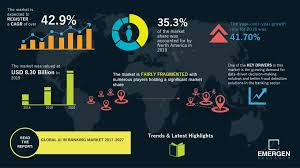
Specific Areas of AI Implementation
1. Customer Service Transformation
- Current State: Chatbots and virtual assistants replacing human representatives
- Key Impacts:
- 24/7 customer support
- Instant response times
- Reduced operational costs
- Standardized communication
- Potential loss of personalized human touch
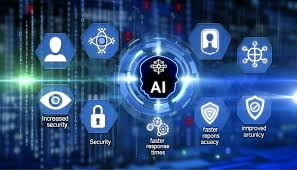
2. Compliance and Risk Management
- AI Applications:
- Automated surveillance systems
- Real-time credit risk assessment
- Fraud detection algorithms
- Regulatory reporting optimization
3. Operational Efficiency
- Automation Targets:
- Data entry processes
- Routine administrative tasks
- Basic financial analysis
- Transaction processing
- Document verification

Employment Landscape Shift
Job Displacement Projections

- High-Risk Roles:
- Customer service representatives
- Data entry clerks
- Compliance specialists
- Entry-level analysts
- Basic marketing roles
Emerging Job Opportunities
- New Role Categories:
- AI system developers
- Machine learning engineers
- AI ethics specialists
- Data interpretation experts
- AI-human interface managers

Skill Evolution Requirements
Technical Skills
- Advanced coding capabilities
- Data analytics proficiency
- AI system management
- Software engineering
- Programming languages relevant to financial technologies

Soft Skills Enhancement
- Critical thinking
- Strategic decision-making
- Complex problem-solving
- Emotional intelligence
- Cross-functional communication
- Adaptability to technological changes
Institutional Responses
Corporate Strategies

- Gradual AI integration
- Workforce reskilling programs
- Selective job reduction
- Investment in AI technologies
- Maintaining human oversight in critical decision-making
Government and Industry Initiatives
- Upskilling programs
- Professional development funding
- Technology adaptation workshops
- Collaborative industry-education partnerships
Potential Challenges
Implementation Barriers
- Initial high investment costs
- Complex integration with legacy systems
- Data privacy concerns
- Potential algorithmic bias
- Employee resistance to change

Ethical Considerations
- Maintaining human judgment in complex scenarios
- Ensuring fair and transparent AI decisions
- Protecting employee rights during technological transitions

Future Outlook
Predicted Trajectory
- Gradual, not sudden displacement
- Augmentation of human capabilities
- Continuous skill adaptation
- Collaborative human-AI work environments
Long-Term Vision
- Enhanced operational efficiency
- More strategic human roles
- Personalized financial services
- Increased innovation potential

Conclusion
AI disruption in banking is inevitable but not catastrophic. The key to success lies in proactive adaptation, continuous learning, and maintaining a balance between technological efficiency and human expertise.
How Encryption Works

Encryption uses mathematical algorithms to convert plaintext (readable data) into ciphertext (scrambled data). Only those with the decryption key can convert the ciphertext back into usable information. There are two main types:
- Symmetric Encryption: Uses the same key for both encryption and decryption. It’s efficient but requires secure key exchange.
- Asymmetric Encryption uses a pair of keys—a public key for encryption and a private key for decryption—to allow secure communication without prior key exchange.

Key Encryption Applications for Privacy
Device Encryption
- Full-disk encryption: Protects all data on your computer or smartphone (BitLocker for Windows, FileVault for Mac, built-in encryption for iOS and Android)
- File-level encryption: Protects individual files and folders

Communication Encryption
- HTTPS: Secures website connections (look for the padlock icon in your browser)
- End-to-end encryption: Used in messaging apps like Signal, WhatsApp, and others to ensure only you and your recipient can read messages
- Email encryption: Options include PGP (Pretty Good Privacy), S/MIME, or encrypted email services
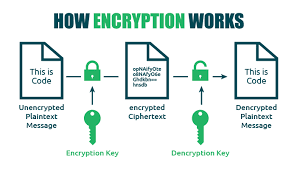
Network Encryption
- VPNs: Create an encrypted tunnel for all your internet traffic
- Wi-Fi encryption: WPA3 is the current most substantial standard for wireless networks
Cloud Storage Encryption
- At-rest encryption: Protects stored data
- Zero-knowledge encryption: The provider has no access to your encryption keys
- Client-side encryption: Data is encrypted before leaving your device

Implementing Encryption in Your Digital Life
- Enable device encryption on all your computers and mobile devices
- Use encrypted messaging apps for sensitive communications
- Verify HTTPS connections when sharing personal or financial information
- Consider encrypted email for sensitive communications
- Choose cloud services with strong encryption policies
- Use a VPN when connecting to public Wi-Fi networks
- Password-protect and encrypt sensitive files and backups
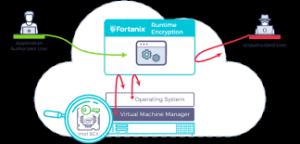
Limitations to Consider
- Encryption can’t protect against malware already on your device
- Weak passwords can undermine even the strongest encryption
- Encryption doesn’t hide metadata (who you’re communicating with, when, how often)
- Some countries have laws limiting encryption use or requiring backdoors

Encryption is a fundamental aspect of digital privacy that works best as part of a comprehensive security strategy. By understanding and implementing appropriate encryption methods, you can significantly enhance your privacy protection online.
.
Identity Theft
Identity theft is a pervasive form of fraud that can have devastating consequences for victims. In this crime, the perpetrator steals an individual’s personal information to assume their identity. This stolen information can often be gathered from discarded documents such as bank statements, utility bills, or even phishing scams.
Once armed with this data, the criminal may choose to open accounts in the victim’s name, a process known as application fraud. They might apply for credit cards, loans, or utility services under pretences, leaving the unsuspecting victim to deal with the aftermath.
The emotional toll of identity theft can be immense. Victims often face financial losses and damage to their credit scores, which can take years. In today’s digital age, account takeovers have become a prevalent threat to unsuspecting victims. Criminals typically employ tactics such as phishing, vishing, or smishing to manipulate individuals into revealing their personal information.

Phishing often involves deceptive emails that appear to come from legitimate sources. These emails may prompt the victim to click on malicious links or provide sensitive details under the guise of verifying their identity.
Vishing, or voice phishing, involves phone calls in which scammers impersonate bank representatives or trusted entities to extract confidential information directly from the victim. Similarly, smishing involves text messages that lure individuals into divulging critical data.
Once armed with this personal information, the criminal can easily convince a bank to change the account holder’s address. This deception allows them full access to the victim’s financial accounts and resources.

Additionally, some criminals are skilled enough to bypass bank interaction altogether. They can use the obtained credentials to log into online accounts directly, executing unauthorised transactions without needing any further verification.
The consequences for victims can be devastating, leading not only to financial loss but also emotional distress as they recover their stolen identities and secure their accounts. Consequently, individuals must remain vigilant and understand these risks to protect themselves against potential account takeovers for repair. Additionally, they may find themselves tangled in legal disputes as they try to prove their innocence.

Recovering from such a violation requires diligence and time, making it crucial for individuals to safeguard their personal information vigilantly. Implementing measures like shredding sensitive documents and monitoring credit reports can help prevent these types of crimes before they occur.
Maxthon
Maxthon has set out on an ambitious journey aimed at significantly bolstering the security of web applications, fueled by a resolute commitment to safeguarding users and their confidential data. At the heart of this initiative lies a collection of sophisticated encryption protocols, which act as a robust barrier for the information exchanged between individuals and various online services. Every interaction—be it the sharing of passwords or personal information—is protected within these encrypted channels, effectively preventing unauthorised access attempts from intruders.
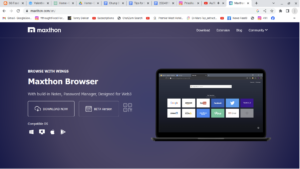 This meticulous emphasis on encryption marks merely the initial phase of Maxthon’s extensive security framework. Acknowledging that cyber threats are constantly evolving, Maxthon adopts a forward-thinking approach to user protection. The browser is engineered to adapt to emerging challenges, incorporating regular updates that promptly address any vulnerabilities that may surface. Users are strongly encouraged to activate automatic updates as part of their cybersecurity regimen, ensuring they can seamlessly take advantage of the latest fixes without any hassle.
This meticulous emphasis on encryption marks merely the initial phase of Maxthon’s extensive security framework. Acknowledging that cyber threats are constantly evolving, Maxthon adopts a forward-thinking approach to user protection. The browser is engineered to adapt to emerging challenges, incorporating regular updates that promptly address any vulnerabilities that may surface. Users are strongly encouraged to activate automatic updates as part of their cybersecurity regimen, ensuring they can seamlessly take advantage of the latest fixes without any hassle.
In today’s rapidly changing digital environment, Maxthon’s unwavering commitment to ongoing security enhancement signifies not only its responsibility toward users but also its firm dedication to nurturing trust in online engagements. With each new update rolled out, users can navigate the web with peace of mind, assured that their information is continuously safeguarded against ever-emerging threats lurking in cyberspace.
